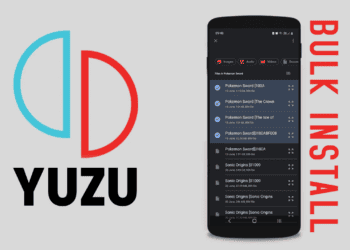People throughout the globe utilize mobile applications to accomplish various functions, such as insurance claims, updates on fitness, and financial transactions, while on the road. These mobile applications have also helped businesses to communicate effortlessly with customers, generate sales, and foster client loyalty.
Statista projects that users will download 187 billion mobile apps from the Google Play Store in 2025, increasing from 109 billion in 2020. Consequently, the market value of high-quality mobile applications is rising today, making it crucial for enterprises to ensure that their apps provide streamlined transactions and a positive user experience (UX).
Mobile Testing – Types
Usability testing: It ensures the app is user-friendly and provides a positive consumer experience.
Compatibility testing: This includes testing the application on various browsers, mobile devices, operating systems, and screen sizes to verify if the app works following set specifications.
Interface testing: This testing involves checking the app’s menu items, history, navigation, settings, bookmarks, and buttons.
Services testing: Developers run service tests to verify an application’s online and offline services.
Low-level resource testing: This test refers to the testing of how the app utilizes memory, scenarios when temporary files are auto-deleted, and developing concerns for the local database.
Performance testing: Performances testing tests an app’s performance. Developers modify the network connection from 2G, 3G, and WiFi to WIFI, sharing documents, measuring battery life, and more.
Operational testing: Developers use operational tests to test organization strategies for backup and recovery. For example, if a battery dies or the app loses data during an upgrade from a store.
Installation testing: Installation testing validates the functionality of an application by installing and removing it from devices.
Security Testing: Tests an app to determine whether or not the information system safeguards data.
Types of Mobile Applications
The type of Mobile App impacts the testing process that developers undertake. There are about four categories of mobile applications.
Native Mobile App
These mobile applications are native to a specific platform, such as Windows Phone, iOS, or Android. As a result, it utilizes the OS and device-specific features more effectively, as developers created the software expressly for that platform.
For instance, native Android apps are available on the Play Store, native iOS apps on the App Store, and more.
Web Apps
Web Apps are pure web applications that you can access through mobile-native browsers like Firefox, Safari, and Chrome. The most prominent mobile app test automation frameworks, such as the Selenium Test framework, are used to test Web applications.
They necessitate neither storage space nor installation procedures. These online applications are responsive by design. Consequently, they also adjust to the various devices and screen sizes, reducing company expenditures.
Progressive Web Applications
PWAs are webpage extensions that you can download to a computer or other device and then use as a Web application. They consume extremely little bandwidth and are updated similarly to a website. They operate quickly independent of the device’s kind or operating system.
Hybrid Apps
These apps combine Web and Native apps. Developers write them using web technologies HTML, JS, and CSS. They are compatible with multiple operating systems.
Organizations develop Hybrid Mobile Apps on a single platform and publish them to multiple app stores, such as the Google Play Store and App Store. This action helps the company save time and resources.
Mobile App Testing Phases
End-to-end testing is essential for the flawless operation of mobile applications. For effective end-to-end testing, the following steps can help:
Outlining The Procedure
The first step is to create a list of all the tests you must run on your mobile application. Create a Test Plan that includes the various use cases you want to test, an explanation of the tests, and the desired outcome for the sprint.
Manual or Automated Testing Type Selection
The subsequent stage is determining whether a test will be manual or automated. You can automate tests if:
- You have to execute test cases often.
- A test’s outcome is predictable.
- Have to write the tests in various OS, screen sizes, and devices.
- Prepare to run Unit tests.
Test Case Preparation For Various User Functionalities.
Once you have selected the automated mobile app testing type, the first step is to define the cases. Here, two approaches are possible:
Testing business scenarios: This testing involves evaluating the system from the standpoint of the business.
Testing based on requirements: This testing involves evaluating the functionality of particular App features.
Determining the test cases also depends on the sort of testing desired. We can separate application testing into two categories:
Functional testing: Functional testing includes Regression testing, System Testing, Integration Testing, Acceptance Testing, Interface Testing, and Unit Testing.
Non-functional Testing: Non-functional Testing includes Load testing, Usability Testing, Localizations Testing, Security Testing, Stress Testing, Volume Testing, Performance Testing, Load Testing, Reliability Testing, and Compliance Testing.
Conclusion
The exponential expansion of mobile device usage and application development makes testing an absolute necessity for the successful and timely delivery of high-quality mobile apps. Mobile App testing is the primary method for guaranteeing that your mobile applications satisfy all requirements and are error-free.
Testing a mobile application under actual user conditions improves the accuracy of the test findings by taking into account multiple elements. Consequently, testing on a real device cloud through an automated software testing platform like HeadSpin can help you develop comprehensive solutions and build better apps.





